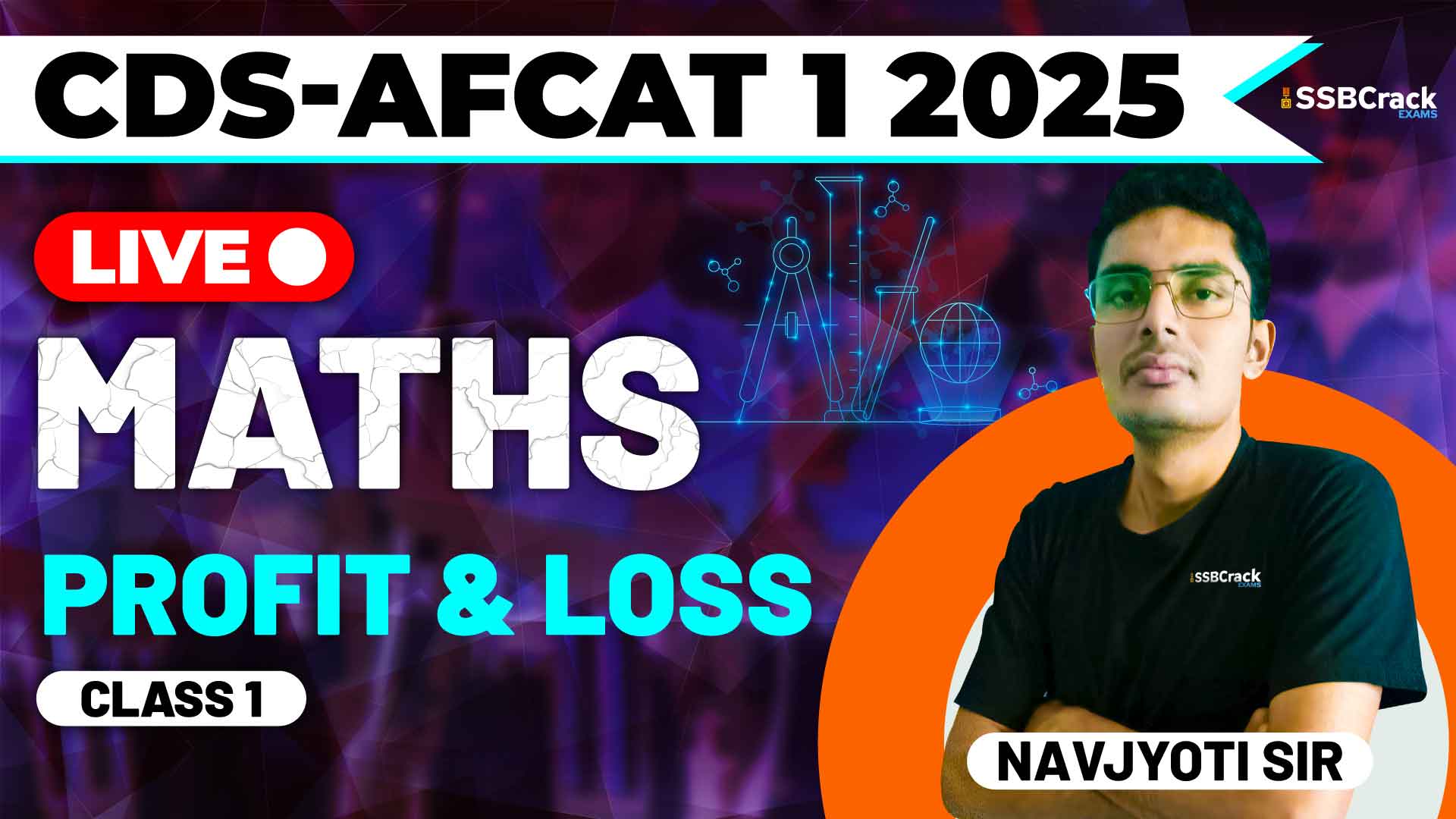In competitive exams like the Combined Defence Services (CDS) and Air Force Common Admission Test (AFCAT), the topic of profit and loss is crucial in the mathematics section. Questions related to profit and loss often involve calculating selling price (SP), cost price (CP), profit percentage, and loss percentage. Mastering this topic will significantly improve your ability to score well in the exam.
In this blog, we will delve into the details of the topic, covering key concepts like selling price, cost price, profit, loss, and how these concepts are interconnected. We’ll also provide essential strategies to prepare for profit and loss questions effectively.
Overview of the Topic
Profit and loss form the foundation of many real-world business and economic transactions, and understanding these concepts is essential for solving related mathematical problems. The basic idea behind profit and loss is comparing the cost price (CP) of an item with its selling price (SP) to determine if a transaction resulted in a gain (profit) or a loss.
Here’s a breakdown of the key concepts:
- Cost Price (CP):
The cost price is the amount paid to purchase an item or the initial value of a product or service. This is the price at which a seller acquires goods before selling them. - Selling Price (SP):
The selling price is the price at which the seller sells the product to a customer. This price can be higher or lower than the cost price, resulting in either profit or loss. - Profit:
A profit occurs when the selling price of a product exceeds its cost price. In simple terms, the seller makes a profit when they sell an item for more than what they originally paid for it. - Loss:
A loss occurs when the selling price is less than the cost price. In this case, the seller loses money on the transaction because they sell the product for less than what it cost to acquire it. - Profit and Loss Percentage:
Profit and loss are often expressed as percentages of the cost price or the selling price. These percentages help in understanding how much profit or loss was made relative to the cost price or selling price. It is essential to calculate profit and loss percentages accurately, as this is a common question type in the CDS and AFCAT exams.
Key Sub-topics Explained
- Profit and Relation to CP and SP
The basic idea behind profit is that the selling price is greater than the cost price. When solving problems in exams, it’s crucial to recognize this relationship. Profit can be calculated by subtracting the cost price from the selling price. You are often asked to express the profit as a percentage of the cost price to better understand the transaction’s profitability. - Loss and Relation to CP and SP
Loss is the reverse of profit. A loss occurs when the selling price is lower than the cost price. To find the loss, subtract the selling price from the cost price. Losses can also be represented as percentages, giving a clearer picture of how much money was lost relative to the initial investment. - Profit Percentage and Loss Percentage
In many competitive exams, you will be asked to calculate profit or loss as a percentage. Understanding how to compute these percentages is critical for solving problems accurately and quickly. The formulas for calculating profit and loss percentages are derived by comparing the profit or loss to the cost price or selling price. The percentage indicates how much the gain or loss was in proportion to the original price of the product. - Finding CP, SP, and Profit or Loss
Many questions in the CDS and AFCAT exams will present you with partial information, such as the selling price and profit percentage, and ask you to calculate the cost price, or vice versa. In such problems, understanding the relationships between CP, SP, and profit or loss is essential to arrive at the correct answer. Knowing how to manipulate these values allows you to find the missing information.
Strategies to Master Profit and Loss for CDS and AFCAT Exams
Preparing for profit and loss questions in these exams requires a focused strategy. Here are some key approaches to mastering this topic:
1. Understand the Basic Relationships Between CP, SP, Profit, and Loss
The foundation of solving profit and loss problems is understanding the relationship between CP and SP. Spend time practicing how to find profit or loss when given either CP or SP and familiarize yourself with how these values are interdependent. This is crucial because many exam questions revolve around these relationships.
2. Memorize Common Profit and Loss Percentages
Just as with percentages and fractions, memorizing common profit and loss percentages will save you time in the exam. For example, if a question mentions a 25% profit, you should immediately know how to apply this percentage to both the cost price and selling price. Similarly, you should know how to deal with questions where profit or loss is expressed as a percentage.
3. Use Approximation Techniques for Quick Calculations
Many times, solving profit and loss problems requires quick mental calculations. Developing approximation skills can help you quickly narrow down answer choices. For example, if you are asked to find the profit made on a selling price of 499 and a cost price of 400, approximate these values to 500 and 400 to get a rough idea of the profit. This technique can help you solve problems faster when exact calculations aren’t required.
4. Practice Word Problems Related to Profit and Loss
Word problems are a staple of competitive exams, and profit and loss questions often appear in this format. To prepare, practice problems that are framed in real-world scenarios, such as calculating the profit made on a sale after offering a discount or determining the loss incurred when goods are sold at a lower price. Developing the ability to interpret and solve these problems will give you an edge in the exam.
5. Learn to Work Backwards
Sometimes, the exam will present you with information about the profit percentage and the selling price, and ask you to calculate the cost price. In these cases, you’ll need to work backwards by using the profit or loss percentage to reverse-engineer the problem. Practicing these types of questions will help you develop the skills needed to solve them efficiently.
6. Focus on Time Management
Profit and loss questions may seem straightforward, but they can be time-consuming if you’re not careful. It’s important to work on time management while practicing, ensuring that you can solve these questions quickly without sacrificing accuracy. Use timed quizzes or practice tests to build your speed and efficiency in solving profit and loss problems.
7. Solve Past Papers and Mock Tests
One of the most effective ways to prepare for profit and loss questions is by solving past papers and mock tests. These resources give you an idea of the types of questions that are asked in the CDS and AFCAT exams and help you identify any gaps in your knowledge. Additionally, solving these questions under timed conditions simulates the pressure of the actual exam, allowing you to refine your test-taking strategies.
Conclusion
The topic of profit and loss is a fundamental concept in the mathematics sections of the CDS and AFCAT exams. Understanding the relationships between cost price, selling price, profit, and loss is essential for solving these problems accurately and quickly.
By mastering the key concepts, practicing regularly, and developing strategies for quick calculations, you can significantly improve your performance in the exam. Remember to focus on time management, solve word problems, and regularly practice with past papers to sharpen your skills.
With the right preparation, profit and loss questions will become one of the more manageable sections of the exam, allowing you to secure crucial marks. Best of luck with your preparation!



















